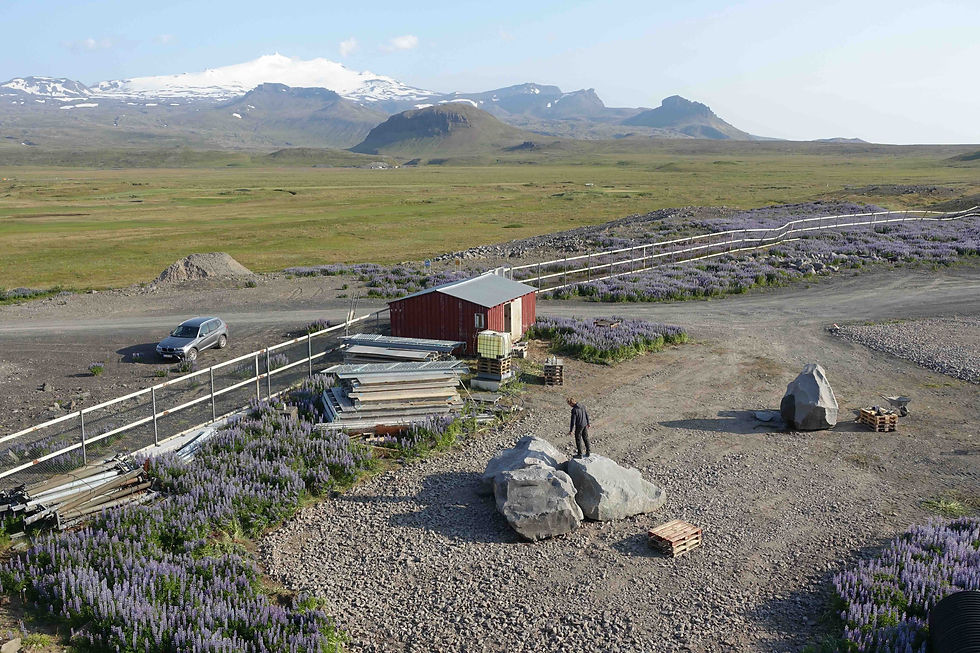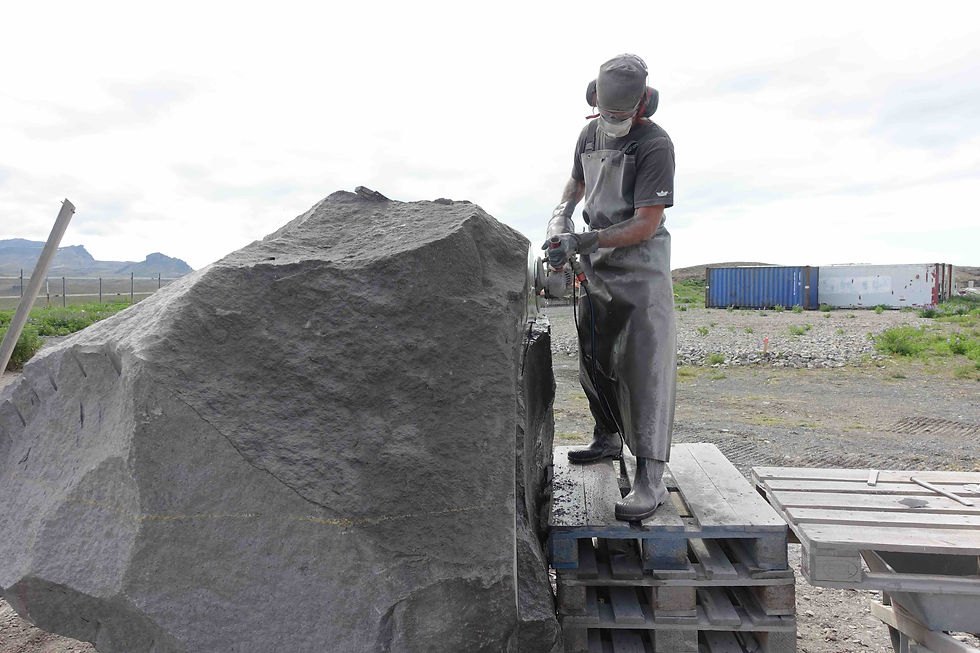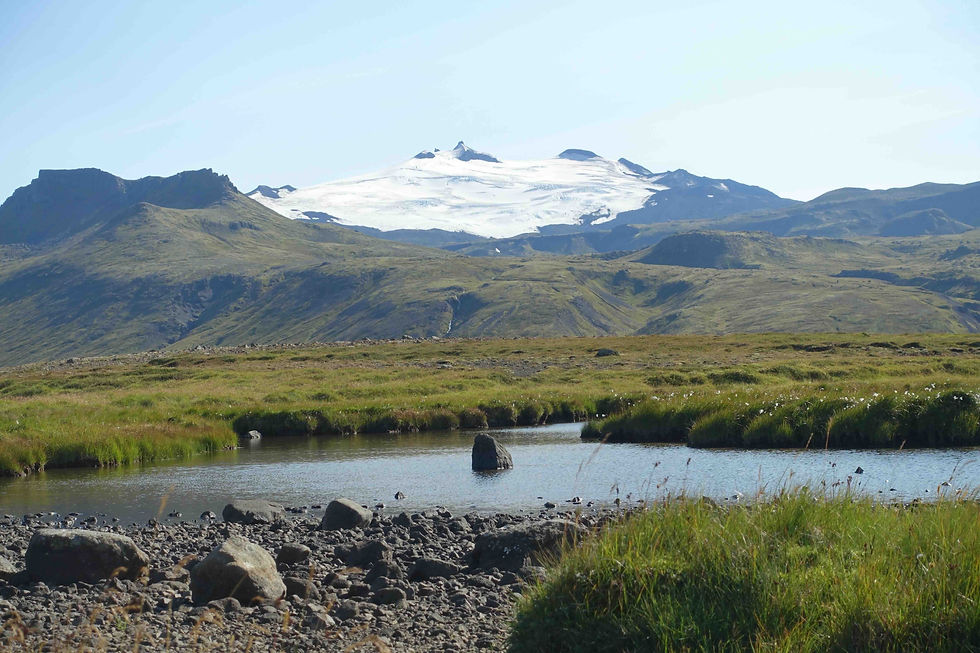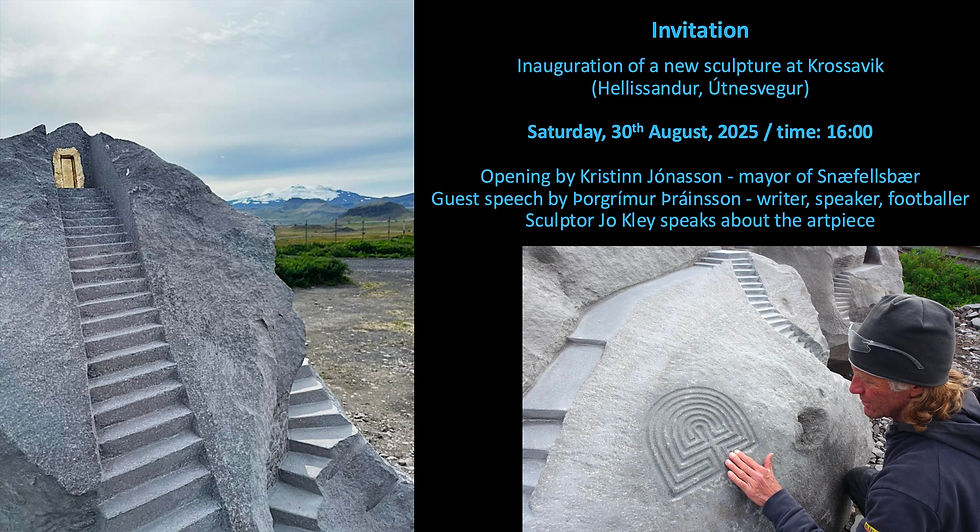Iceland 2025: Frelsisleið - know yourself
- Auftrag / commission
- May 27
- 3 min read
Updated: Oct 3
watch the project on the German tv channel NDR:
Kleys Kolosse - Kieler Outdoor-Kunst auf Iceland
Kley's giants - Outdoor Art from Kiel on Iceland
NDR live:
Sunday, October 5, 2025, 6:00 PM to 6:45 PM
Monday, October 6, 2025, 1:25 AM to 2:10 AM
I am delighted to tell you about an extraordinary artistic project that took me again to Iceland for over three months. At the beginning of June 2025, I took the ferry to Iceland to work on a monumental stone sculpture made of nearly 60 tons of basalt! Now the work is done and the sculpture is installed by the seaside since the end of August.
The sculpture is dedicated to the people of the municipality of Hellissandur and the legendary Snæfellsjökull volcano. This volcano is not only geographically impressive, but also of literary significance - it is considered the "entrance to the center of the earth", as the famous writer Jules Verne described it in his classic "Journey to the Center of the Earth". My sculpture will therefore also be a tribute to Verne and his fascinating story.
Below you can follow the progress of my work. Please feel free to also follow me on my social media channels.


The sculpture consists of four huge basalt stones into which a 3D labyrinth is carved.
A labyrinth has a deep symbolic meaning in various cultures and contexts. Unlike a maze, which contains many paths and dead ends, a classical labyrinth has only one path that leads to the centre and out again. Labyrinths appear in art, literature and architecture as symbols of secrets, trials, spiritual journeys or the complexity of life.
The labyrinth is often understood as a metaphor for an inner journey - a search for the self or the divine. The walk to the centre stands for immersion in oneself, the centre for enlightenment or knowledge, and the way back for the return to life - changed or renewed. The labyrinth symbolises the path through life with all its twists and turns, challenges and developments.
In the Middle Ages, labyrinths (e.g. in cathedrals such as Chartres) were used symbolically as a substitute for a pilgrimage.
The labyrinth of Knossos, where the Minotaur lived, symbolises the chaos of the unconscious, which can be overcome through courage (Theseus) and intelligence (Ariadne's thread).
Nowadays, walkable labyrinths often serve as places of rest, meditation or reflection. A labyrinth can also be understood as a symbol for complex systems or problems that cannot be solved directly, but only through a patient and systematic approach.












































